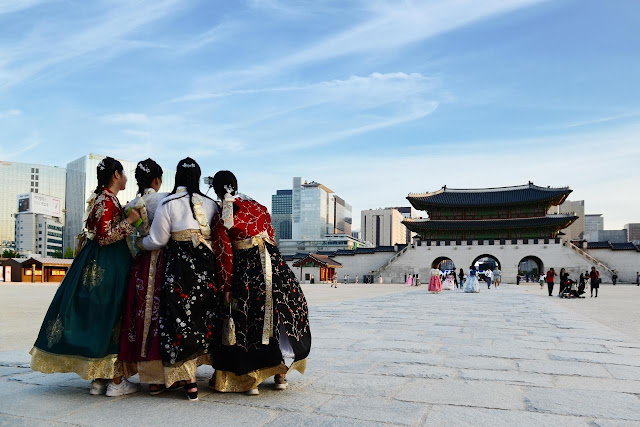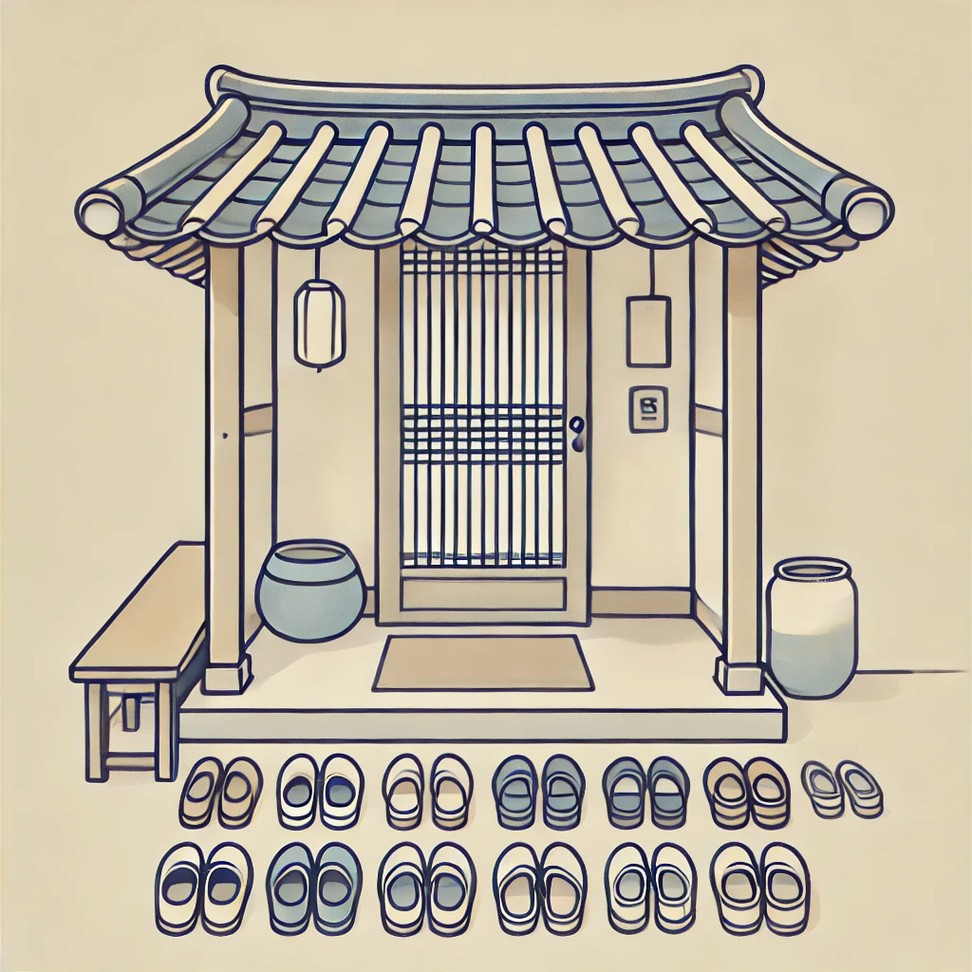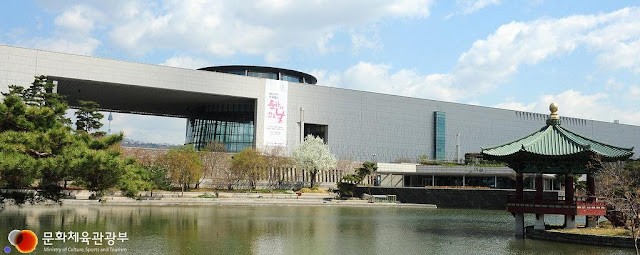Gyeongbokgung Palace: Women in Hanbok [Photo Credit] KTO IR Studio
TL;DR – Gyeongbokgung Is Where Korea’s Royal Past Comes Alive
Gyeongbokgung Palace isn’t just a tourist spot—it’s Korea’s living royal legacy.
Walk through grand gates, witness guard-changing ceremonies, and explore the king and queen’s chambers. Don't miss the stunning Gyeonghoeru Pavilion and serene Hyangwonjeong island pavilion.
Free guided tours, hanbok photo ops, and nearby attractions like Bukchon and Insadong make this a full-day cultural experience.
1. Introduction
If you’re planning a trip to Seoul, there’s one place you cannot miss—Gyeongbokgung Palace. As the largest and most iconic of the five grand palaces from the Joseon Dynasty, it offers visitors a unique opportunity to experience the grandeur of Korea’s royal history and exquisite architecture. Whether you’re a history enthusiast, a photography lover, or someone looking for an unforgettable cultural experience, Gyeongbokgung Palace is a must-visit destination.
Gyeongbokgung Palace is the No. 1 popular tourist destination among foreign travelers visiting Korea.
2. A Brief History of Gyeongbokgung Palace
Gyeongbokgung (경복궁) means “Palace Greatly Blessed by Heaven.” It was built in 1395 during the reign of King Taejo, the founder of the Joseon Dynasty. It served as Korea’s political and cultural center for centuries, but it also suffered damage during Japanese invasions. Fortunately, restoration efforts have brought the palace back to its former glory, allowing visitors to step back in time and witness the splendor of Korea’s rich history.
3. Gyeongbokgung Palace Opening Hours & Admission Fees
🕛 Opening Hours
– January–February, November–December: 09:00–17:00 (Last entry at 16:00)
– March-May, September–October: 09:00–18:00 (Last entry at 17:00)
– June–August: 09:00–18:30 (Last entry at 17:30)
※ Closed every Tuesday
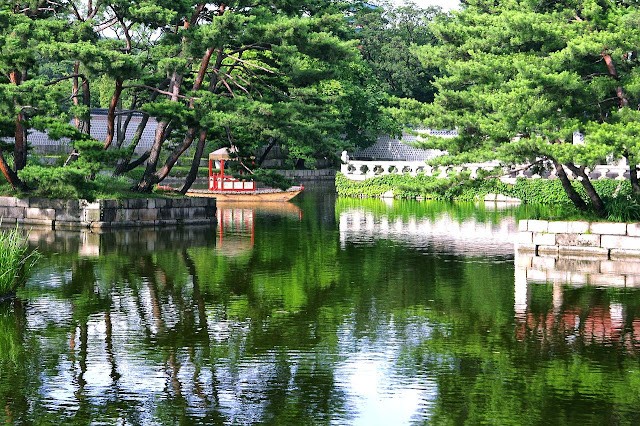
🧭 Admission Fees
– Individuals: 3,000 KRW (Ages 19–64)
– Groups (10+ people): 2,400 KRW per person
※ Free entry for visitors under 19 and over 64
※ Visitors wearing a full traditional hanbok (both jeogori (top) and chima/baji (bottom)) are granted free admission
❓ FAQ (Frequently Asked Questions)
Q1. Can I visit Gyeongbokgung Palace for free?
Yes, if you wear a complete traditional hanbok (both jeogori and chima/baji), admission is free. Also, visitors under 19 and over 64 can enter for free.
Q2. When is the best time to visit Gyeongbokgung Palace?
Morning is best to avoid crowds and capture better photos. Spring and autumn are excellent thanks to cherry blossoms or foliage.
Q3. What language options are available for the guided tours?
Free guided tours are offered in English (11:00, 13:30, 15:30), Japanese, Chinese, Spanish (Fri/Sat), and French (Wed/Thurs). No reservations needed.
Q4. How long should I plan for a visit?
At least 2–3 hours inside the palace, plus extra time if visiting the nearby museums (Palace or Folk) or walking to Bukchon, Insadong, or Gwanghwamun Square.
Q5. Is the Royal Guard Changing Ceremony real?
It’s a reenactment, not an actual security detail. But it’s historically accurate and highly photogenic—performed twice daily except Tuesdays (10:00 & 14:00).
Q6. Are there lockers or places to store bags?
Lockers are not available inside Gyeongbokgung itself, but hanbok rental shops nearby often offer bag storage while you wear their outfits.
Q7. How do I get there by subway?
Use Line 3 → Gyeongbokgung Station (Exit 5, 5-min walk) or Line 5 → Gwanghwamun Station (Exit 2, 6-min walk).
Q8. Is Gyeongbokgung wheelchair accessible?
Some areas have uneven terrain or steps, but accessible routes and restrooms exist. The central courtyards and museum areas are mostly flat.
Q9. Are there English audio guides?
Not inside the palace, but you can download mobile apps like ‘HiKR’ or ‘Visit Korea’ for self-guided tours with audio in English.
Q10. What’s better—day or night visit?
Nighttime admission is limited to special seasons (usually spring/fall) and requires booking. It’s spectacular but highly competitive.
4. Gyeongbokgung Palace Foreign Language Tour Programs
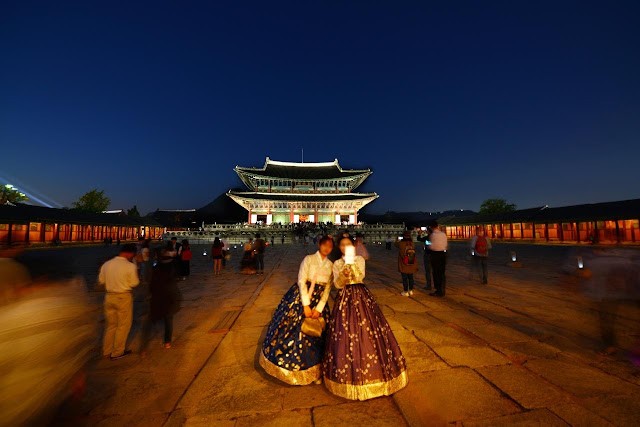
Explore Gyeongbokgung with professional guides who bring history to life through engaging storytelling. Tours depart on time from the designated meeting point inside Heungnyemun Gate, in front of the information desk. No reservation is required for individual visitors, and the tours are free.
Tour Schedule by Language
– English: 11:00, 13:30, 15:30
– Japanese: 10:00, 14:30
– Chinese: 10:30, 15:00
– Spanish: 10:30, 15:00 (Friday & Saturday only)
– French: 11:00, 15:00 (Wednesday & Thursday only)
※ English, Japanese, and Chinese tours are available daily, except Tuesdays.
5. Gyeongbokgung Palace Map & Highlights
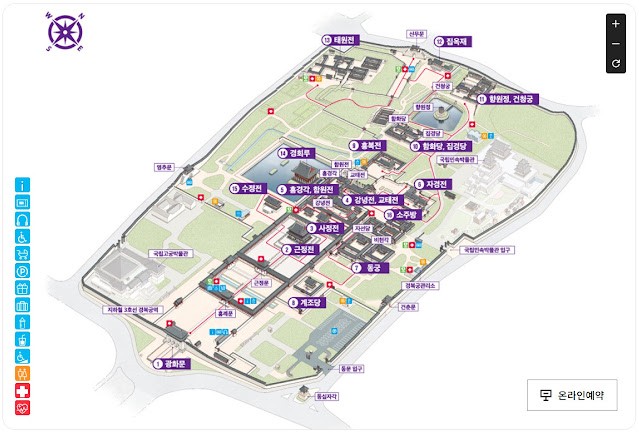
① Gwanghwamun (광화문) – The majestic main gate of the palace
② Geunjeongjeon (근정전) – The throne hall, where royal ceremonies took place
③ Sajeongjeon (사정전) – The king’s office for state affairs
④ Gangnyeongjeon & Gyotaejeon (강녕전, 교태전) – The king and queen’s residence
⑤ Honggyeonggak & Hamwonjeon (홍경각, 함원전) – Study halls for scholars
⑥ Jagyeongjeon (자경전) – The queen dowager’s residence
⑦ Donggung (동궁) – The crown prince’s quarters
⑧ Gyejodang (계조당) – A shrine for royal ancestral rites
⑨ Heungbokjeon (흥복전) – A royal residence
⑩ Hamhwadang & Jipgyeongdang (함화당, 집경당) – Residences of royal concubines
⑪ Hyangwonjeong & Geoncheonggung (향원정, 건청궁) – A scenic pavilion and a royal residence
⑫ Jibokjae (집옥재) – A unique library blending Chinese and Korean architectural styles
⑬ Daewonjeon (대원전) – A memorial hall for deceased kings
⑭ Gyeonghoeru Pavilion (경회루) – A grand banquet hall on a pond
⑮ Sujeongjeon (수정전) – An office for government officials
5-1.② Geunjeongjeon: The Throne Hall
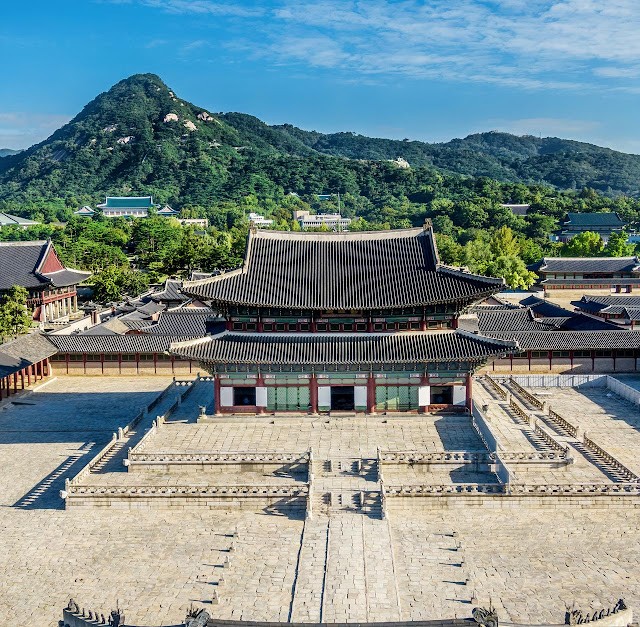
Among these, Geunjeongjeon (근정전) is one of the most significant buildings in Gyeongbokgung Palace. The king held formal meetings with high-ranking officials in the throne hall, conducted royal ceremonies, and greeted foreign envoys. The grand architecture and intricate detailing of Geunjeongjeon beautifully encapsulate the spirit of the Joseon Dynasty.
5-2.⑭ Gyeonghoeru Pavilion: A Scenic Banquet Hall on Water
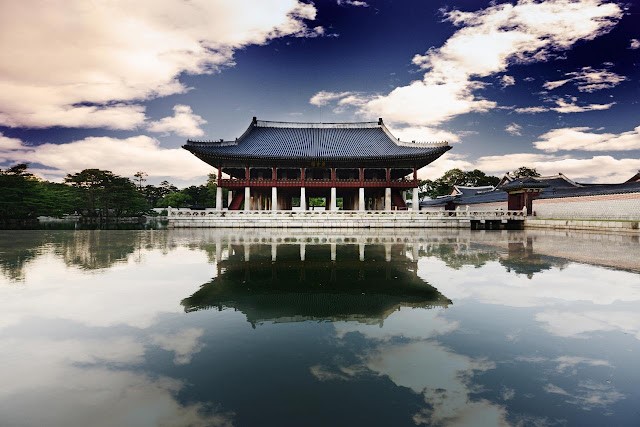
Perched gracefully over an artificial pond, Gyeonghoeru Pavilion (경회루) was a venue for royal banquets and official ceremonies during the Joseon Dynasty. Its architectural beauty, reflected on the water, makes it one of the most picturesque locations in Gyeongbokgung. The pavilion becomes a hotspot for photographers capturing stunning seasonal landscapes in spring and autumn.
5-3.⑪ Hyangwonjeong Pavilion: A Serene Retreat in Nature

Located on a small island in an artificial pond, Hyangwonjeong Pavilion (향원정) exudes a tranquil charm in perfect harmony with nature. This small yet elegant structure was designed as a peaceful retreat within the palace, offering visitors a quiet escape amidst lush greenery and calm waters.
5-4. National Palace Museum of Korea
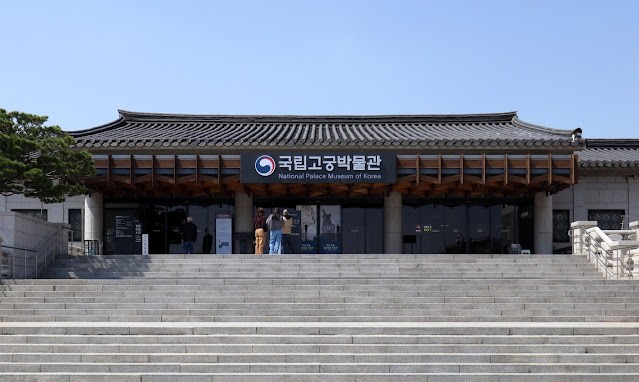
Situated near Gwanghwamun Gate, the National Palace Museum of Korea houses an extensive collection of artifacts showcasing the history and culture of the Joseon royal family. Exhibits include royal costumes, ceremonial objects, and historical relics that provide deep insights into the grandeur of Korea’s monarchy. Best of all, admission is free!
5-5. National Folk Museum of Korea

For those interested in Korea’s traditional way of life, the National Folk Museum of Korea is a must-visit. Located within Gyeongbokgung Palace, this museum exhibits Korea’s everyday customs, seasonal traditions, and folk beliefs. Visitors can explore how Koreans lived, worked, and celebrated throughout history through its vast collection of historical artifacts.
5-6.⑥ Jagyeongjeon: A Palace Built with Devotion
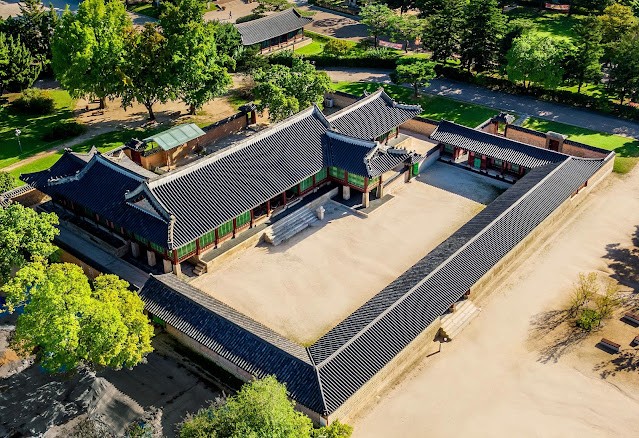
Built by King Jeongjo (22nd king of Joseon) for his mother, Lady Hyegyeong, Jagyeongjeon (자경전) is a beautiful palace residence adorned with intricate floral walls. As a designated space for women of the royal court, this building provides a glimpse into the daily life of royal ladies in the Joseon Dynasty.
5-7.④ Gangnyeongjeon: The King’s Living Quarters
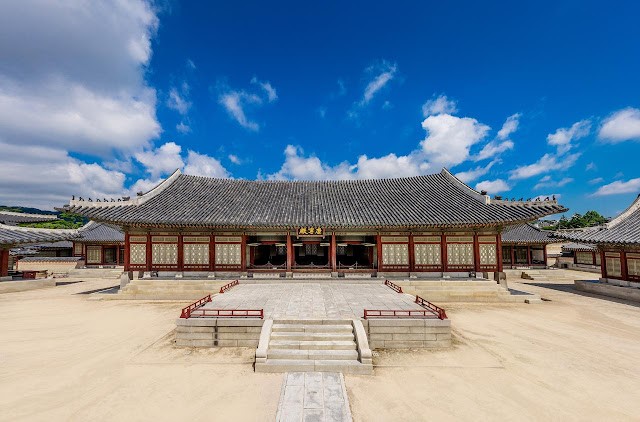
Gangnyeongjeon (강녕전) served as the bedchamber and living space for the king. This hall was designed for the monarch’s comfort while also adhering to the traditional Confucian principles of royal architecture. The structure reflects the dignity and simplicity of a Joseon-era ruler’s private quarters.
5-8.④ Gyotaejeon: The Queen’s Living Quarters
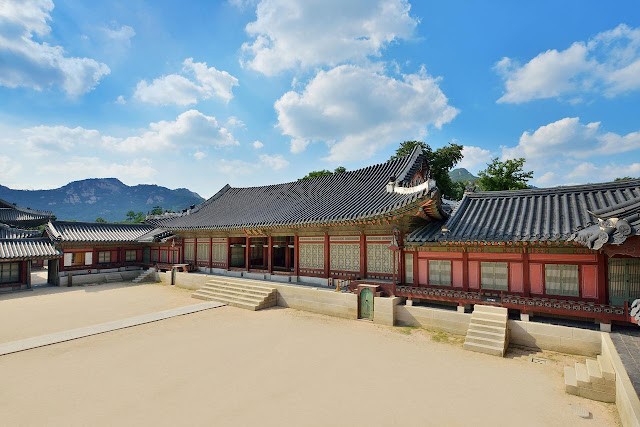
Located behind Geunjeongjeon, Gyotaejeon (교태전) was the queen’s residence and a central space for the royal women of the palace. This building offers a glimpse into the private life of Joseon queens, reflecting their significant role in palace affairs and family traditions.
5-9.⑦ Donggung: The Crown Prince’s Residence
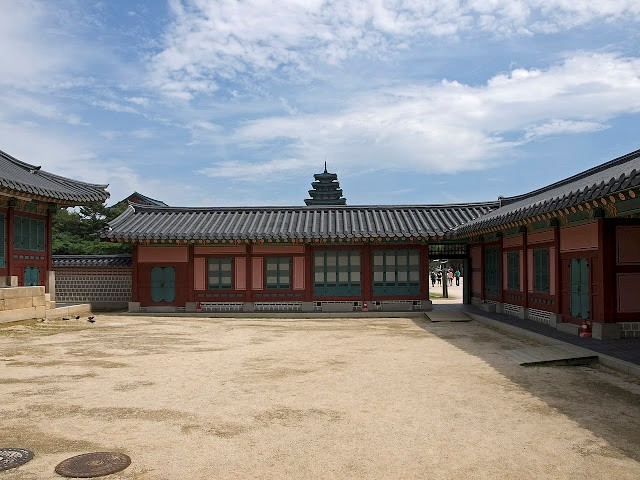
Donggung (동궁) was the crown prince’s residence, where he lived and studied before ascending the throne. As the future king’s home, it was a place of education and discipline, ensuring the young prince was prepared for his royal duties.
5-10.① Gwanghwamun: The Main Gate of Gyeongbokgung
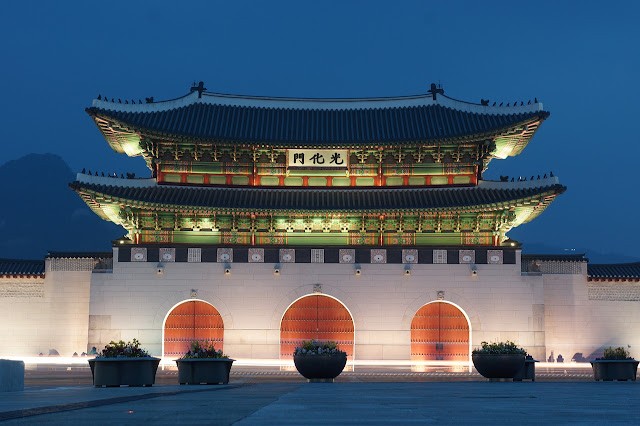
Standing as the main gate of Gyeongbokgung Palace, Gwanghwamun (광화문) symbolizes the power and dignity of the Joseon Dynasty. It has undergone multiple reconstructions throughout history, and today, it remains a significant landmark in Seoul, serving as the entrance to the Grand Palace complex.
5-11.① The Royal Guard Changing Ceremony: A Must-See Event!
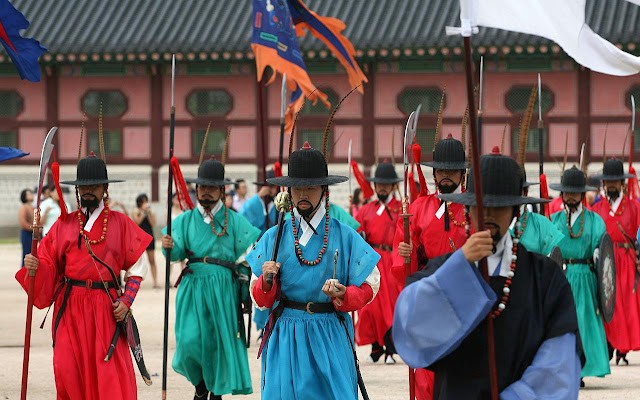
One of the most popular attractions at Gyeongbokgung Palace is the Royal Guard Changing Ceremony (수문장 교대식). This event reenacts the traditional guard change of the Joseon Dynasty, complete with vibrant royal uniforms, traditional music, and impressive marching formations.
– Schedule: Every day except Tuesday
– Time: 10:00 AM & 2:00 PM
– Duration: ~20 minutes
– Location: Gwanghwamun Gate
The elaborate rituals and vibrant costumes make this ceremony a must-watch visitor experience!
“Dress in a Traditional Hanbok and Capture Stunning Photos at Gyeonghoeru Pavilion!”
6. How to Get to Gyeongbokgung Palace
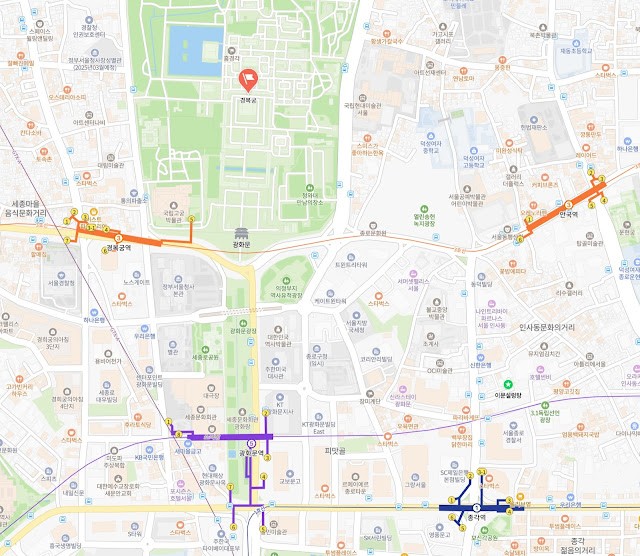
🚇 By Subway
– Line 3, Gyeongbokgung Station → Exit 5 (5-minute walk)
– Line 3, Anguk Station → Exit 1 (6-minute walk)
– Line 5, Gwanghwamun Station → Exit 2 (6-minute walk)
🚌 By Bus
Multiple bus routes, including tourist shuttle buses, stop near Gyeongbokgung Palace.
– Stop: Gyeongbokgung → Buses: 109, 171, 272, 601, 606, 710, 1020, 7025
– Stop: Deokseong Girls’ Middle & High School → Buses: 171, 272, 401, 406, 704, 710, 1020, 7025
🚖 By Taxi
Tell the driver: “Gyeongbokgung” (경복궁)—most drivers are familiar with this famous destination.
7. Best Restaurants Near Gyeongbokgung Palace
The area surrounding Gyeongbokgung Palace is home to numerous historic and diverse restaurants. You can use TripAdvisor, Naver, or Google to explore nearby restaurants, read reviews, and check ratings. While many dining options are available, we highly recommend trying traditional Korean hanjeongsik (full-course Korean meal) or premium Hanwoo (Korean beef), even if it costs a little extra—it’s an experience worth having!
8. Must-Visit Places Near Gyeongbokgung Palace
📍 Bukchon Hanok Village
Between Gyeongbokgung and Changdeokgung Palaces, Bukchon Hanok Village is a historic neighborhood where Joseon-era aristocrats once lived. Today, it blends traditional hanok houses with modern architecture, creating a charming tourist destination. Visitors can explore beautifully preserved hanok residences, cultural experiences, trendy cafés, and restaurants, making Bukchon a fascinating place to wander.
📍 Insadong
Famous as Seoul’s traditional cultural district, Insadong lies to the east of Gyeongbokgung Palace. The main street, Insadong-gil, is lined with shops selling Korean handicrafts, calligraphy, ceramics, and souvenirs. Visitors can also enjoy traditional performances, art exhibitions, and authentic Korean tea houses scattered throughout the area.
📍 Cheonggyecheon Stream
Just south of Gyeongbokgung Palace, Cheonggyecheon Stream is a scenic urban waterway offering a peaceful escape from the bustling city. The walking paths and relaxing atmosphere make it a favorite spot for locals and tourists. The illuminated stream creates a beautiful cityscape at night, perfect for a leisurely evening stroll.
📍 Gwanghwamun Square
Located right in front of Gwanghwamun Gate, Gwanghwamun Square is a popular gathering place for locals and tourists. The square is known for its historical monuments, including the iconic statue of Admiral Yi Sun-sin and the statue of King Sejong the Great. The area frequently hosts cultural events and exhibitions, making it a lively spot to visit.
📍 Seochon (West Village)
To the west of Gyeongbokgung Palace, Seochon (서촌) is a hidden gem filled with artists’ studios, independent galleries, and charming eateries. Unlike Bukchon, which focuses on aristocratic hanok houses, Seochon retains a more laid-back and artistic atmosphere.
Must-visit spots include:
– Yun Dong-ju Literature Museum: The former boarding house of poet Yun Dong-ju is now a museum dedicated to his works.
– House of Yi Sang: The birthplace of the renowned Korean writer Yi Sang.
9. Travel Tips for Visiting Gyeongbokgung Palace
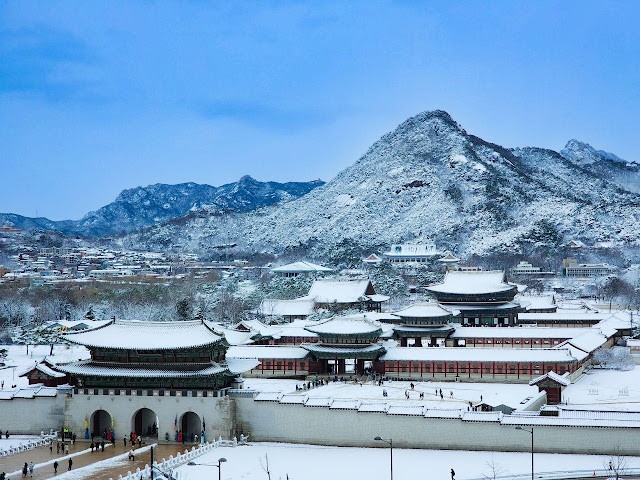
– Visit early in the morning
Arriving early allows you to enjoy the palace without crowds and take stunning photos in the serene morning light.
You’ll also have enough time to explore nearby attractions and relax.
– Wear comfortable shoes
Gyeongbokgung Palace is vast, and exploring it requires a lot of walking.
Since many nearby attractions are best explored on foot, wearing comfortable shoes is essential.
– Wear a hanbok for free entry
If you wear a hanbok (traditional Korean attire), you can enter Gyeongbokgung Palace for free!
There are many hanbok rental shops around the palace, so renting one and taking beautiful photos inside the palace can make for a memorable experience.
– Bring water and snacks
Walking around the palace can be tiring, and there are limited options for food and drinks inside.
Carrying water and light snacks to stay refreshed during your visit is a good idea.
– Check the weather forecast
Since most activities at Gyeongbokgung Palace are outdoors, dress appropriately for the season.
Summer can be hot and humid, while winter can be freezing, so plan accordingly!
🌍 Final Thoughts
Gyeongbokgung Palace is more than just a historic site—it’s the starting point of a journey through Korea’s rich history. From its grand halls and royal ceremonies to its stunning gardens and tranquil pavilions, every part of the palace offers a unique experience.
Plan your trip today and create unforgettable memories at Gyeongbokgung Palace!
